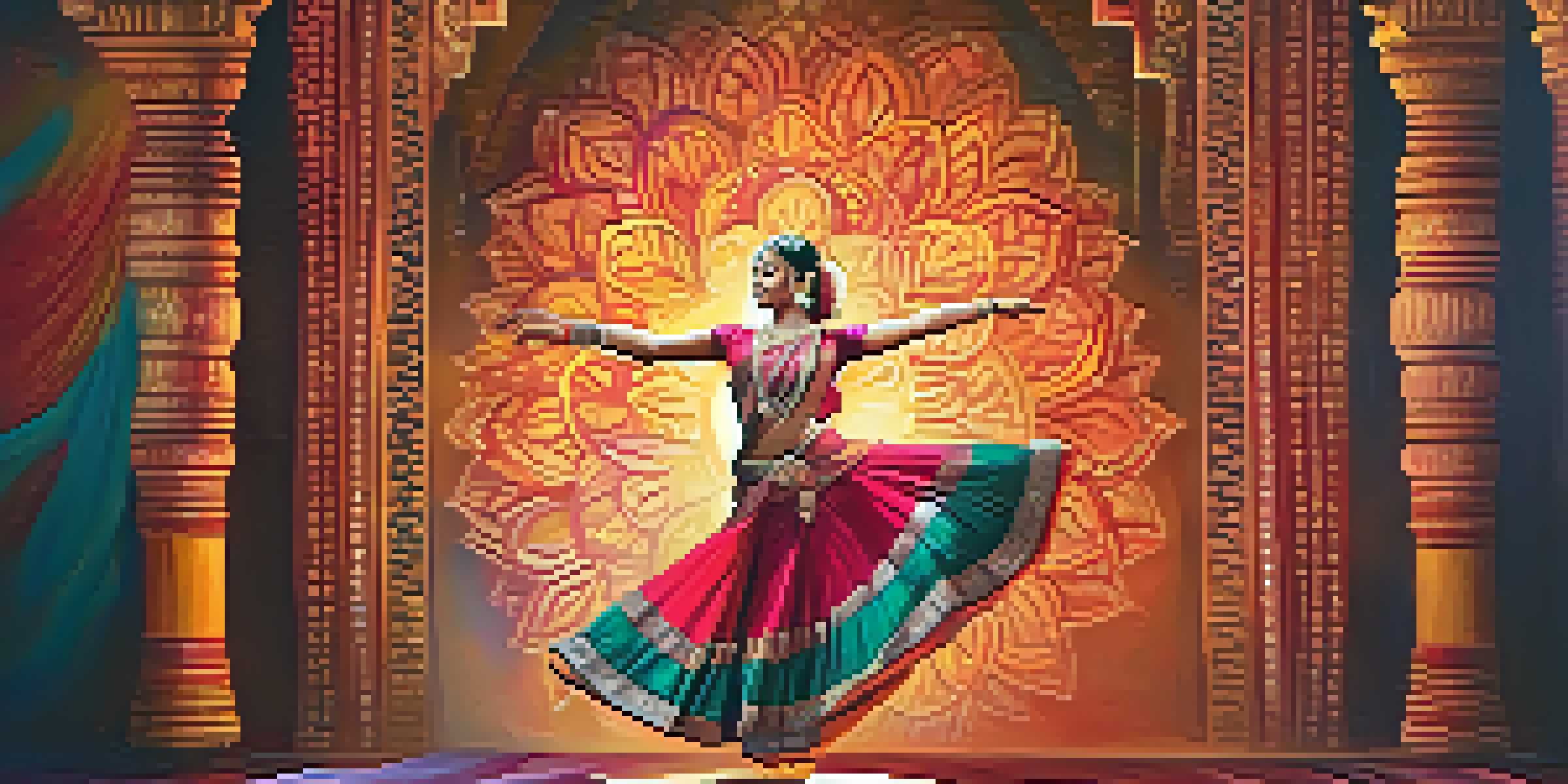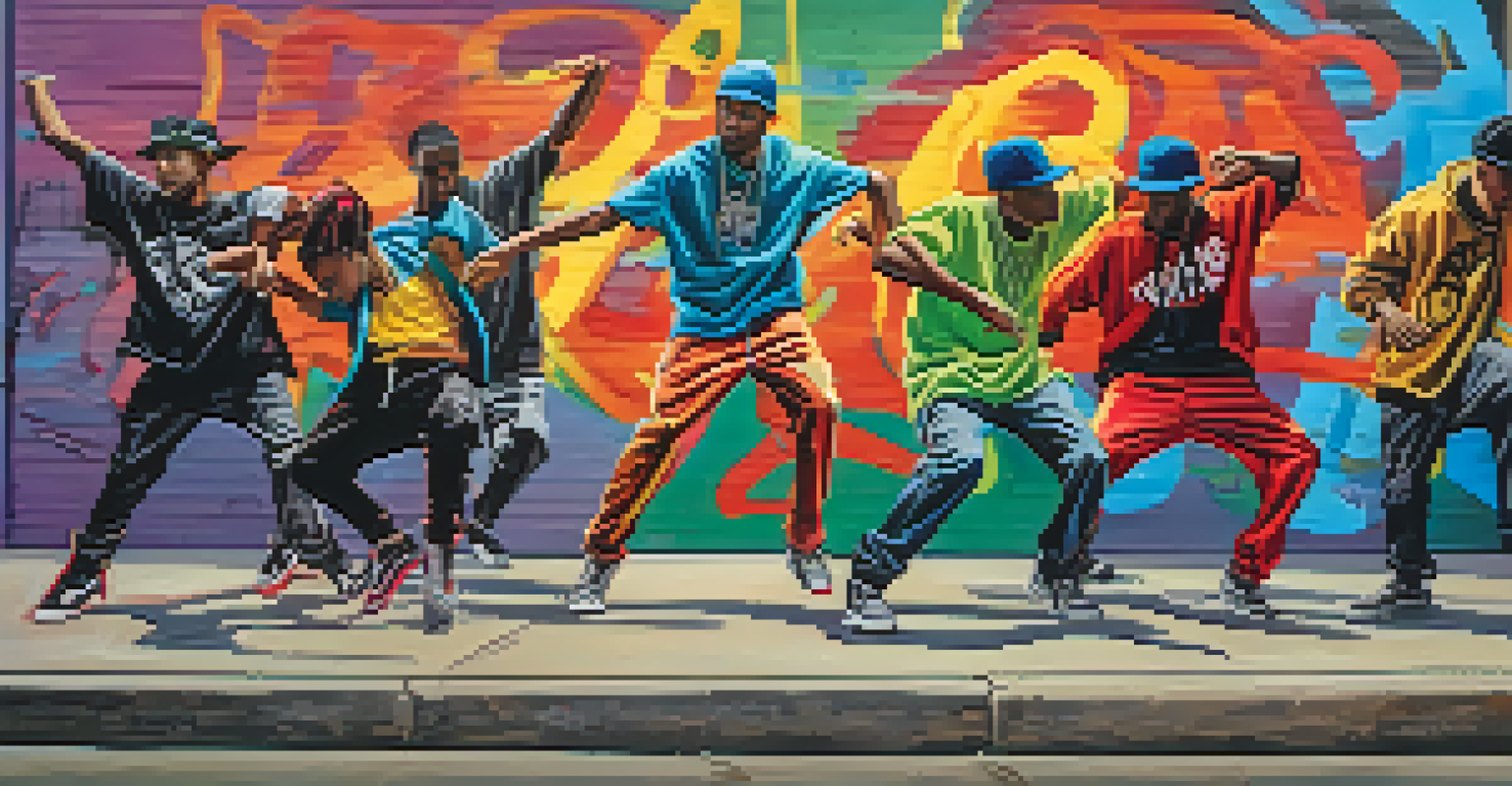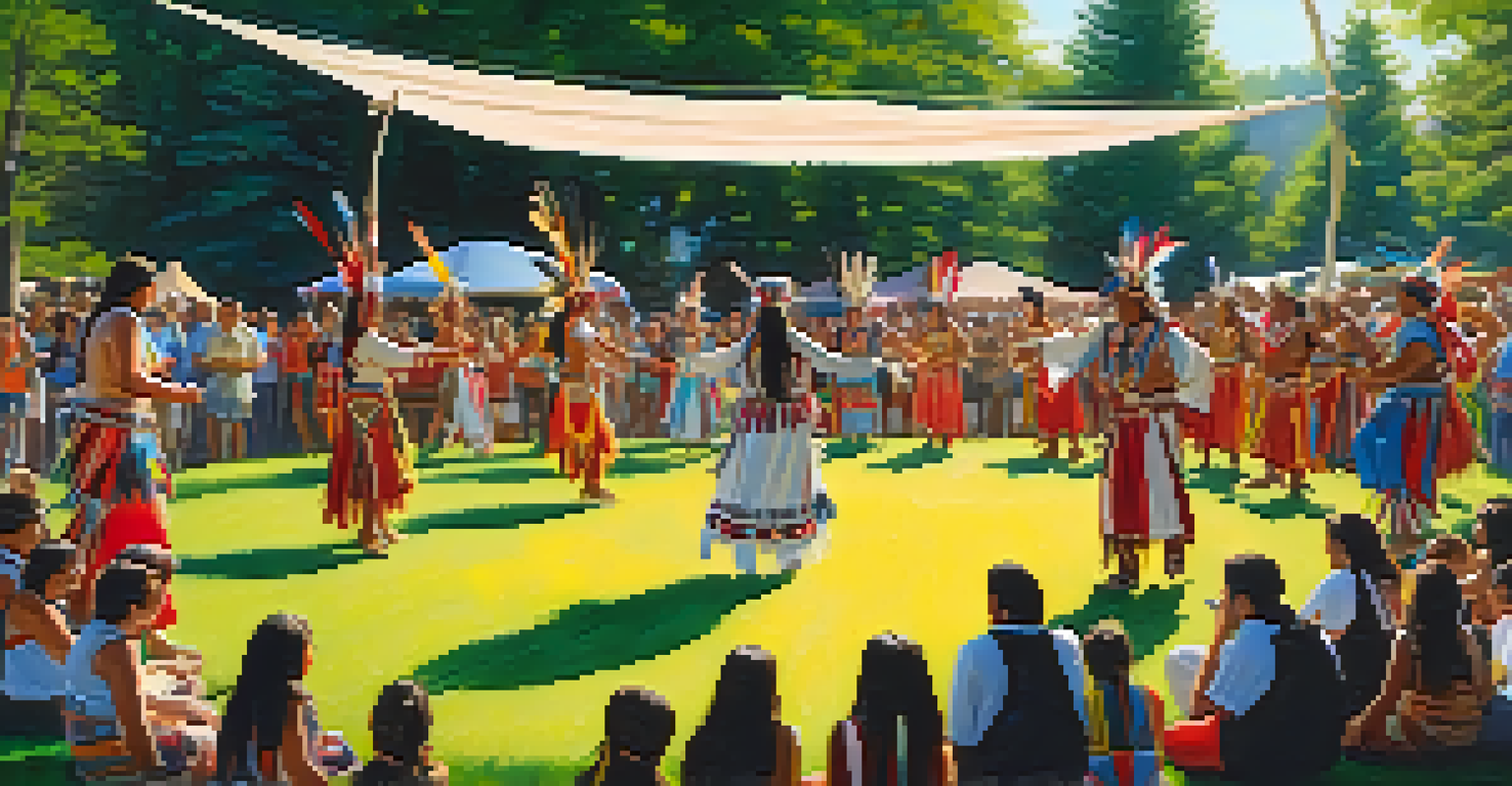Exploring Cultural Influences on Dance Techniques and Styles

Understanding Dance as a Cultural Expression
Dance is more than just movement; it’s an expression of cultural identity. Each dance style often reflects the history, values, and beliefs of the community it originates from. For instance, traditional Indian dance forms like Bharatanatyam tell ancient stories and convey spiritual themes, connecting dancers to their heritage.
Dance is the hidden language of the soul.
Similarly, African dance encompasses a variety of styles that celebrate life, rituals, and communal bonds. These dances are often accompanied by vibrant music, emphasizing the integral relationship between movement and cultural storytelling. Through dance, individuals can express emotions and experiences unique to their cultural backgrounds.
Thus, understanding dance requires appreciating the cultural narratives woven into each technique, making it a powerful medium for conveying the essence of a community.
The Role of Historical Events in Shaping Dance
Historical events play a significant role in the evolution of dance styles. For example, the influence of colonialism led to the fusion of various dance techniques, resulting in new styles that reflect a blend of cultures. The emergence of jazz dance in the United States is a prime example, combining African rhythms with European musical traditions.

Moreover, social movements have also impacted dance. The Civil Rights Movement saw a rise in African American dance forms, emphasizing freedom and expression. Dances like the twist or the moonwalk not only became popular but also served as powerful symbols of cultural pride and identity.
Dance Reflects Cultural Identity
Dance serves as a powerful expression of cultural identity, weaving together history, values, and communal narratives.
These historical contexts highlight how dance evolves, often mirroring societal changes while allowing communities to express their narratives through movement.
Regional Influences on Dance Styles
Dance is often deeply rooted in the geographic and cultural context of its origin. For instance, Flamenco, from Spain, is characterized by its passionate movements and intricate footwork, reflecting the country’s rich history and diverse cultural influences. The music, clothing, and rhythms all play a crucial role in defining this unique dance form.
To watch us dance is to hear our hearts speak.
In contrast, the hula dance from Hawaii emphasizes storytelling through graceful movements and gestures, often accompanied by traditional chants. This dance style is not only a form of entertainment but also a way to preserve Hawaiian culture and history.
These regional influences are vital in shaping dance styles, offering a glimpse into the traditions and values of different communities around the world.
The Impact of Globalization on Dance Techniques
Globalization has significantly influenced dance, creating a melting pot of styles and techniques. Today, dancers can learn various dance forms from across the globe, often blending them into hybrid styles. For example, hip-hop has integrated elements from traditional African and Caribbean dances, leading to dynamic performances that reflect a mix of cultures.
Social media platforms have also played a crucial role in this phenomenon. Dancers can showcase their skills and learn from others worldwide, leading to the rapid spread of new trends. The viral success of certain dance challenges illustrates how quickly cultural influences can be shared and adopted.
Historical Events Shape Dance Styles
The evolution of dance styles is significantly influenced by historical events, such as colonialism and social movements, reflecting societal changes.
While this blending enriches dance, it also raises questions about cultural appropriation versus appreciation, emphasizing the need for respectful engagement with diverse dance traditions.
Cultural Significance of Dance in Community Rituals
In many cultures, dance is integral to community rituals and celebrations. For instance, Native American powwows feature traditional dances that bring people together, honoring heritage and fostering community spirit. These dances often serve as a means of connecting with ancestors and celebrating cultural identity.
Similarly, in many African cultures, dance is a crucial part of life events such as weddings, initiation ceremonies, and festivals. Each dance carries specific meanings and is performed to mark significant moments, reinforcing social bonds and shared values.
Through these community rituals, dance transcends mere performance; it becomes a vital expression of cultural continuity and collective memory.
Dance Education and Cultural Awareness
Incorporating cultural awareness into dance education is essential for preserving dance traditions. Dance schools and programs that emphasize cultural context help students appreciate the history and meaning behind different styles. This understanding fosters respect and encourages dancers to honor the roots of the movements they practice.
For example, ballet students learning about its origins can appreciate the artistic evolution from the courts of Renaissance Italy to contemporary stages. Similarly, those studying hip-hop can gain insight into its roots in urban culture and social justice.
Globalization Blends Dance Techniques
Globalization fosters the blending of diverse dance styles, leading to hybrid forms while raising important questions about cultural appreciation.
By promoting cultural awareness, dance education not only enriches the learning experience but also cultivates a community of dancers who value diversity and inclusivity.
Future Trends in Dance Styles and Cultural Exchange
The future of dance is likely to be shaped by ongoing cultural exchanges and technological advancements. As dance continues to evolve, we can expect to see even more hybrid styles emerge, driven by collaborative efforts between artists from different backgrounds. This blending creates opportunities for new forms of expression that reflect contemporary society.
Moreover, technology will play a pivotal role in how dance is created and shared. Virtual reality and online platforms enable dancers to connect and collaborate across borders, fostering a global dance community. This connectivity may lead to innovative styles that push the boundaries of traditional dance forms.

As we look to the future, embracing cultural influences will be key to the continued evolution of dance, celebrating diversity while paving the way for new artistic expressions.